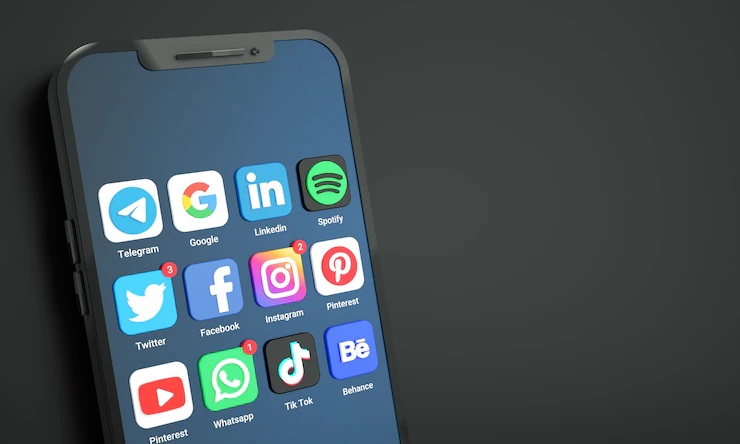To grow organically, as most SEO experts have discovered, you must generate high-quality content. The same may be true for businesses that are building a social media presence or a new newsletter subscriber base. However, when individuals receive more content every day, they become less responsive to basic content that does not offer a fresh outlook. To address this issue, you must ensure that your content is native to each platform on which you publish. But that does not mean you have to start from the beginning. There is a technique to transform one content idea into multiple. You can spread across multiple channels and increase brand awareness.
Also Read. 10 Best On-Page SEO Guide 2022
Writing a new blog post every day takes time, especially with limited resources and budget. The most difficult problem here is developing a content strategy at scale. So, how can you generate a lot of high-quality content?

Start With A Video Content
If you have a video on a relevant topic, then you can convert it into multiple pieces of content. Further, you can distribute it over time through the appropriate channels.
Expand Your Content Using Video
Did you know that the typical human type at 41 words per minute (WPM), yet speaks at around 150 WPM?
Speaking is approximately 3.5 times faster than typing. For each piece you write, you must conduct a deep study, develop your initial version, edit, and make changes. It can take up a whole workday. Is there a simpler way to achieve this? Record yourself using Loom or a similar video programme. Save the video file, and then email it to an audio/video transcription provider.
Of course, even if you use text-to-speech, there is still editing time to consider. Some would argue that editing a text-to-speech transcription will take more time. However, for those who are excellent speakers but not strong writers, transcribing will be a powerful technique to move at a faster speed.
The Step-By-Step Method
How do you ensure that people read your material once you have written it? As with any other content strategy, ensure to document and follow the process of planning, generating, and executing.
1- Choose Topics That Grab Attention
Content creation might be the most difficult part of the process at times. There are many starting places depending on the purpose of your content. For example, if you are writing a top-of-funnel blog article with the purpose of driving a lot of organic traffic. You should start by doing keyword research to come up with a good topic. Why? You must learn what your target audience looks for. Ensure that your website appears in the search results.
If you are creating a breakdown of your product or service. You might want to start by interviewing a subject matter expert (SME) to learn more about the product/service and the solutions it offers to your target audience. Why? Take note of what they feel are the most significant parts, as well as if there is a new feature/addition for the audience. These points can be connected to a topic that may spark the target reader’s attention.
2- Make An Overview of Your Blog.
Record a video similar to how you would write a blog article as you build out your blog layout. In this situation, making an outline for the post based on the questions you ask yourself will make it easier to arrange the transcription and blog once you record.
3- Select Your Weapon (Distribution Strategy)
Now decide where your content will be published as you are ready to start recording your video. The content Distribution method has a major impact on your video recording process. Especially if you want to use the video as the content itself (hello, YouTube!). For example, if you run your own business, then your videos should be more professional. Alternatively, if you know you’ll be splitting up the video, leave time for natural “breaks” for simple editing later on. By preparing ahead of time, you can better anticipate where the information will go and how it will get there.

4- Time To Shine
There is a number of free video recording software accessible, such as Zoom and Loom. You may record a video of yourself speaking into your camera using Zoom, and you will receive an audio file once you end up your call. You may use the Loom chrome extension to record yourself in video form while sharing your screen. If you have extra information, such as a Powerpoint presentation or a walk-through, this might be the tool for you. Regardless matter how you record, you’ll need an audio file to later transcribe and convert into other content types.
5- Transcribe Your Video
The normal writer takes around four hours to transcribe one hour of audio, while some of the best transcribers can do it in as little as two hours. To put that in context, the average one-hour audio file has around 7,800 words, which would take the average writer approximately three and a half hours to write. You must also consider research time, internal linking, and a variety of other considerations, so it will take around an hour to generate 1,000 words of high-quality blog content. Transcription shortens this process length.
6- Transform the Transcription To a Blog Format.
You will be emailed the transcribed information, split down by speaker. This greatly simplifies post-transcription editing. If you correctly prepared the blog before recording, the editing procedure should be straightforward. Copy and paste each piece into the appropriate area of your site, then add your photographs, keywords, and links as needed.
7- Divide Your Video Into Small Parts.
This is when things start to get interesting. If you are going to use your video for social media postings, cut it into multiple parts that can be published across different platforms. Quotes from the movie may also be used to create text visuals, text-based social postings, or full articles. You can use Insta, LinkedIn, Google, Twitter, FB, Youtube, etc. If you have a 10-minute video, you can transcribe it into a 2,500-word blog that will take you roughly 10-15 minutes to read.
You have another resource to share, which can also include important keywords to improve its ranking on the SERP. Say you end up cutting the video down to five minutes. You can make the following decisions from here:
1- A five-minute video for YouTube and your blog.
2- Ten 30-second videos to be shared on various social media sites
3- Twenty LinkedIn postings of 100 words or less
4- Thirty Twitter tweets ranging from 50 to 60 words
Besides, there are other sites such as Reddit and Quora, email marketing, through which you may distribute your content. By beginning with a detailed video, you may expand your content possibilities from a single blog article to 50+ pieces of content across numerous social media platforms and search engines.

8- Distribute
Now that you have developed your various types of content, it is time to make sure it is seen by the right audience. A constant supply of relevant content on your website and social media channels is important to boosting your brand, developing credibility, and showing that you are worth trusting as a potential partner. You may continue this process when you reuse older content and put together another 50+ pieces of information from a previously successful post.
Increasing the Visibility Of Organic Searches
Typically, you may increase your visibility by creating content that best represents a target keyword and building links to that page, which increases your ranks for that keyword and long-tail versions of that phrase. However, if your business grows, you may find yourself depending heavily on branded search traffic. Branded traffic is, in fact, one of the most important generators of organic traffic. If you do not have an authentic brand, it’s difficult to get backlinks automatically, making it more difficult to rank organically. Social media is one of the most important sources of brand recognition. The internet is used by almost 4.5 billion people, while social media is used by 3.8 billion.
If you want more people to search for your business, create relevant social media campaigns that encourage them to do so. However, we are seeing an increasing number of social media platforms, such as Pinterest, YouTube, and Twitter, appearing as search results and snippets.





